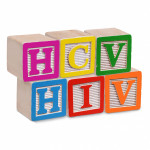Among people coinfected with HIV and hepatitis C virus (HCV), hep C treatment is more likely to fail among those who have cirrhosis of the liver.
In numerous clinical trials, the modern crop of HCV treatments, known as direct-acting antivirals (DAAs), have shown comparable cure rates among those who do and do not also have HIV. However, in two recent cohorts of Spanish individuals receiving treatment for hep C, the subgroups that had HIV in each cohort did experience somewhat lower cure rates compared with the subgroups that had only HCV, specifically cure rates of 92 percent and 95 percent among those with HIV and HCV compared with cure rates of 98 percent and 98 percent among those with only HCV.
Looking to identify risk factors that might influence such differences in cure rates, researchers studied data on 1,505 members of the real-world German hepatitis C cohort (GECCO), all of whom were treated for HCV with one of the following DAA-based regimens: interferon, ribavirin and Sovaldi (sofosbuvir); Sovaldi and ribavirin; Sovaldi and Olysio (simeprevir); Sovaldi and Daklinza (daclatasvir) with or without ribavirin; Harvoni (ledipasvir/sofosbuvir); and the Viekira regimen (ombitasvir/paritaprevir/ritonavir; dasabuvir) with or without ribavirin.
Findings were published in Open Forum Infectious Diseases.
Sixty-three percent of the cohort members were male. The median age was 52. Seventy-two percent had genotype 1 of hep C, 4 percent had genotype 2, 18 percent had genotype 3 and 6 percent had genotype 6. Twenty percent had a hep C viral load above 6 million before treatment. Forty-six percent had been treated for hep C before. Nineteen percent were on opioid substitution therapy.
Twenty-three percent (349 of 1,505) of the cohort had HIV. Of those with HIV, 20 percent were diagnosed with that virus when they already had AIDS. Seventeen percent had a CD4 count below 350 before beginning HCV treatment. The median lowest-ever CD4 count was 206. Ninety-nine percent were on antiretroviral (ARV) treatment for HIV, and 92 percent had a fully suppressed HIV viral load. The median time that people with HIV took ARVs before undergoing HCV treatment was 6.4 years.
Those living with HCV (known as being monoinfected), compared with those living with HIV and HCV (coinfected), were significantly more likely to be male (89 percent versus 55 percent), less likely to have genotype 3 of hep C (9 percent versus 21 percent), more likely to have genotype 4 (18 percent versus 3 percent), more likely to have a hep C viral load above 6 million (27 percent versus 17 percent) and less likely to have cirrhosis (22 percent versus 31 percent).
Overall, 95 percent of the study cohort, including those with and without HIV, achieved a sustained virologic response 12 weeks after completing therapy (SVR12, considered a cure of HCV). A respective 94 percent and 95 percent of those with and without HIV were cured of hep C; this difference was not statistically significant, meaning it could have occurred by chance.
Ten individuals in the overall cohort stopped hep C treatment early, including one whose virus did not respond to treatment, two who experienced viral breakthrough in which their virus returned during treatment and seven who experienced medication-related toxicities, including difficulty breathing or labored breathing (dyspnea), rash, panic attacks, insomnia and nausea. None of the cohort members experienced grade 3 or 4 adverse health events based on the results of laboratory tests. After completing treatment, three people were reinfected with hep C, and 67 saw their virus return.
Looking at data on the 349 coinfected individuals, the researchers did not find that the following factors were associated with differences in hep C cure rates: sex, age, genotype, high hep C viral load, ALT (a measure of liver enzymes), previous experience with hep C treatment, lowest-ever CD4 count and use of opioid substitution therapy.
Those with a CD4 count below 350 and those with cirrhosis were less likely to achieve a cure for hep C. After adjusting the data for various factors, the researchers found that having cirrhosis increased by 3.5-fold the likelihood that those with HIV/HCV coinfection would not be cured of hep C through DAA treatment. A lower CD4 count was no longer statistically significantly associated with treatment failure in this adjusted analysis.
To read the study abstract, click here.







Comments
Comments